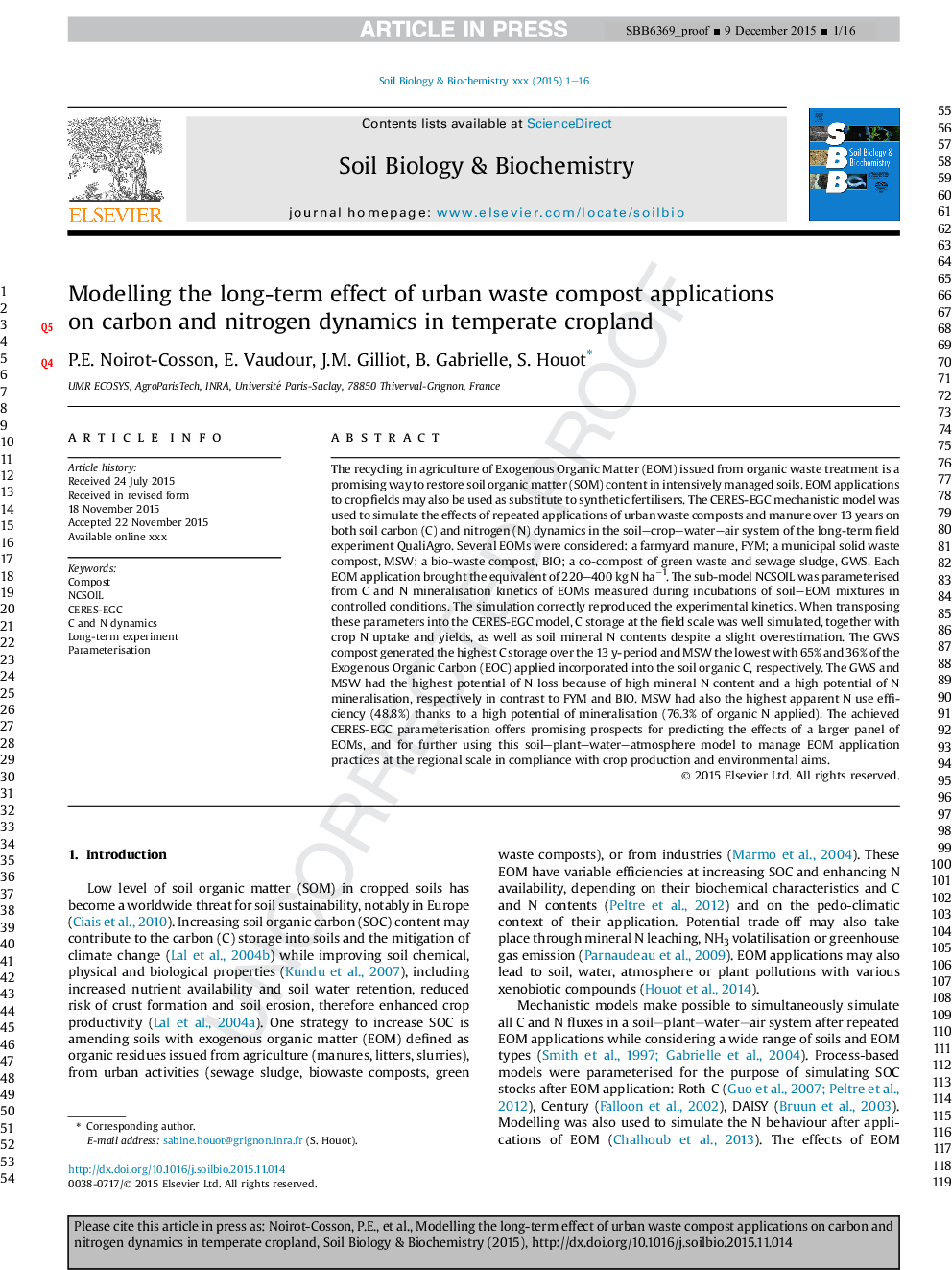| کد مقاله | کد نشریه | سال انتشار | مقاله انگلیسی | نسخه تمام متن |
|---|---|---|---|---|
| 8363614 | 1542590 | 2016 | 16 صفحه PDF | دانلود رایگان |
عنوان انگلیسی مقاله ISI
Modelling the long-term effect of urban waste compost applications on carbon and nitrogen dynamics in temperate cropland
ترجمه فارسی عنوان
مدل سازی اثر درازمدت برنامه های کاربردی کمپوست زباله شهری بر پویایی کربن و نیتروژن در مزرعه معدنی
دانلود مقاله + سفارش ترجمه
دانلود مقاله ISI انگلیسی
رایگان برای ایرانیان
کلمات کلیدی
موضوعات مرتبط
علوم زیستی و بیوفناوری
علوم کشاورزی و بیولوژیک
دانش خاک شناسی
چکیده انگلیسی
The recycling in agriculture of Exogenous Organic Matter (EOM) issued from organic waste treatment is a promising way to restore soil organic matter (SOM) content in intensively managed soils. EOM applications to crop fields may also be used as substitute to synthetic fertilisers. The CERES-EGC mechanistic model was used to simulate the effects of repeated applications of urban waste composts and manure over 13 years on both soil carbon (C) and nitrogen (N) dynamics in the soil-crop-water-air system of the long-term field experiment QualiAgro. Several EOMs were considered: a farmyard manure, FYM; a municipal solid waste compost, MSW; a bio-waste compost, BIO; a co-compost of green waste and sewage sludge, GWS. Each EOM application brought the equivalent of 220-400 kg N haâ1. The sub-model NCSOIL was parameterised from C and N mineralisation kinetics of EOMs measured during incubations of soil-EOM mixtures in controlled conditions. The simulation correctly reproduced the experimental kinetics. When transposing these parameters into the CERES-EGC model, C storage at the field scale was well simulated, together with crop N uptake and yields, as well as soil mineral N contents despite a slight overestimation. The GWS compost generated the highest C storage over the 13 y-period and MSW the lowest with 65% and 36% of the Exogenous Organic Carbon (EOC) applied incorporated into the soil organic C, respectively. The GWS and MSW had the highest potential of N loss because of high mineral N content and a high potential of N mineralisation, respectively in contrast to FYM and BIO. MSW had also the highest apparent N use efficiency (48.8%) thanks to a high potential of mineralisation (76.3% of organic N applied). The achieved CERES-EGC parameterisation offers promising prospects for predicting the effects of a larger panel of EOMs, and for further using this soil-plant-water-atmosphere model to manage EOM application practices at the regional scale in compliance with crop production and environmental aims.
ناشر
Database: Elsevier - ScienceDirect (ساینس دایرکت)
Journal: Soil Biology and Biochemistry - Volume 94, March 2016, Pages 138-153
Journal: Soil Biology and Biochemistry - Volume 94, March 2016, Pages 138-153
نویسندگان
P.E. Noirot-Cosson, E. Vaudour, J.M. Gilliot, B. Gabrielle, S. Houot,
